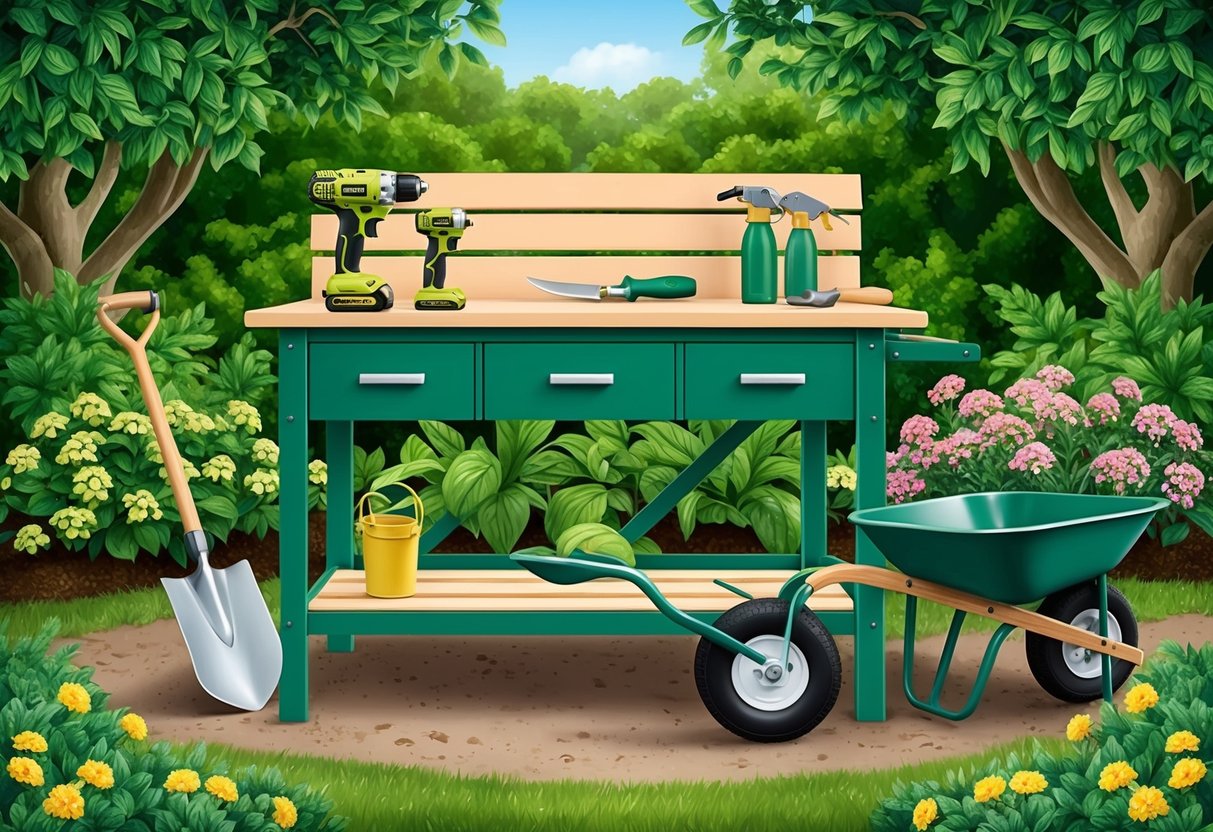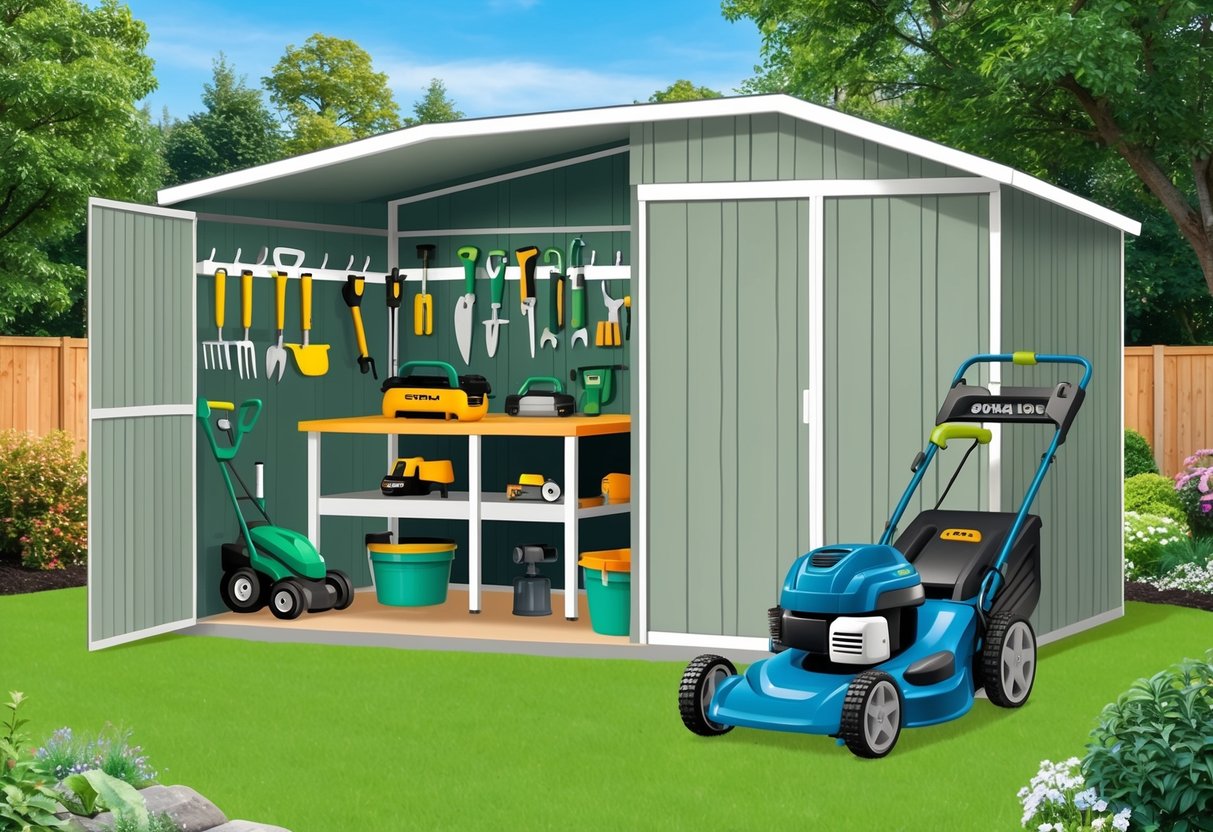
Lightweight Hand Tools
Using lightweight hand tools is essential for reducing fatigue and boosting productivity. Ergonomic designs with large grips, reduced weight, and comfortable handles make repetitive gardening tasks much easier on the hands and wrists.
These features can help prevent strain injuries, especially with extended use. Tools like hand trowels, small rakes, and pruners often come with upright or angled handles designed to maintain the hand and wrist in a natural position.
This lessens the risk of carpal tunnel symptoms and muscle discomfort. Many options now feature soft rubber grips or contoured handles for additional support.
Telescoping and adjustable hand tools help gardeners avoid bending and stooping, which is especially helpful for those with limited mobility or back concerns. Choosing high-quality, ergonomic tools allows for more precise control and efficient digging, planting, or weeding.
Explore recommendations for ergonomic gardening tools to maximize comfort and achieve better results with less effort.
Specialized Tools for Vegetable and Flower Gardens
Vegetable gardens, raised beds, and flower beds each benefit from garden tools designed to increase efficiency and precision. Choosing the right specialized equipment saves time and prevents damage to delicate plants and roots.
Tool Choices for Vegetable Gardens
Vegetable gardens require tools that handle both soil cultivation and detailed maintenance. A stainless steel hand trowel is essential for transplanting seedlings, while a sharp hoe makes quick work of weeding between rows.
Pruning shears help cut back unruly tomato vines or harvest vegetables cleanly. Garden forks with strong tines aerate compacted soil, especially important for root vegetables.
For tasks like sowing seeds in straight lines, a simple garden line or planting grid provides precision. Gloves made from durable but flexible materials protect hands from thorns and rough soil.
Kneeling pads are valued for reducing strain during long planting sessions. Drip irrigation kits or soaker hoses provide consistent moisture without overwatering.
Gardeners often use a narrow-bladed weeder for removing stubborn dandelions or tap-rooted weeds from vegetable rows.
Best Tools for Raised Beds and Flower Beds
Raised beds and flower beds are often compact, requiring tools with shorter handles for improved control. A hand cultivator with three or four prongs turns soil while avoiding crowded plant roots.
Narrow border spades are helpful when planting in tight spaces. Compact garden rakes smooth out soil and remove debris from the surface.
Precision tools like a hori hori knife dig, cut, and plant bulbs, especially in flower beds with dense plantings. Quality pruning shears ensure clean cuts for deadheading or shaping perennials.
Watering cans with a fine rose head are ideal for gently watering seedlings and delicate flowers. Short-handled weeders are easy to maneuver, minimizing disturbance to established roots.
For added comfort, lightweight hand forks and ergonomic grips reduce fatigue during quick planting or detailed care.
Proper Storage and Care of Garden Tools

Consistent maintenance and smart storage reduce repair costs and extend the lifespan of essential gardening tools. Adopting these best practices can prevent rust, accidents, and misplaced equipment while keeping every tool ready for the next outdoor project.
Organizing a Tool Shed
A well-organized tool shed improves workflow and safeguards tools from unnecessary wear. Heavier items such as shovels, rakes, and hoes should hang on sturdy wall hooks or racks, keeping handles off the floor and minimizing moisture exposure.
Smaller hand tools can be kept in labeled bins or stored vertically by plunging them into a bucket of sand or pebbles, which helps clean and lightly oil the blades as they are stored. Shelving units are helpful for sorting power tool accessories, spare parts, gloves, and safety eyewear.
Keeping paths free of clutter reduces the risk of tripping and allows for easy access to any needed gardening tools. It is also effective to use a simple pegboard for hanging commonly used items so they are visible at a glance.
For additional security, consider a locked cabinet for more valuable or hazardous equipment. Climate plays a role in storage choices.
A dry, well-ventilated shed or garage is ideal, as moisture can lead to rust or wood rot. Periodically checking for leaks or condensation will help maintain the shed’s integrity and protect garden tools against damage.
For detailed organization tips, browse this guide to garden tool care and storage.
Maintaining Your Essential Tools
Regular cleaning is vital for prolonging the life of gardening tools. After use, dirt should be rinsed off with a hose or brushed away, especially from blades and joints.
Tools should be dried thoroughly with a clean cloth to prevent rust. For stubborn sap or sticky residue, mild soap or a diluted vinegar solution can be used safely.
Sharpening tools, such as pruners, loppers, and shears, increases their efficiency and reduces physical strain. Applying light oil to metal parts prevents corrosion and keeps moving joints smooth.
Wooden handles benefit from an occasional coat of boiled linseed oil to avoid splintering and cracking. Seasonal inspections are recommended—tighten bolts, replace worn grips, and repair or replace any parts showing damage.
Storing tools only when clean and dry reduces long-term maintenance needs. For a step-by-step maintenance approach, visit this comprehensive tool care resource.